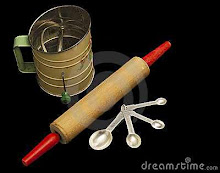Here’s the basics - you determine what shape you want you candle to take (using molds, containers and votives to shape the hot wax into candles). Next you would determine the type of wax you want to use - bee wax, soy wax, and gels are the most popular. You would position the wick (there are numerous types of wicks) so the wax is poured around it and it doesn’t fall in. You need to melt the wax, usually done in a double boiler over you stove. You can add color and scent to it at this stage. The melted wax is then poured into your holding container.
The type of wax you use is partly dictated by the container or mold that you use. For instance, pillar waxes have a high melting point and are good to use with pillars and molds. These types of candles (pillar and mold) are freestanding. They are removed from their containers once they have hardened.
Votive waxes have a lower melting point than pillar waxes. This type of wax is used in metal votive candleholders as well as some containers.
One of the more interesting types of candle you can create is container candles. Look for containers that can stand some heat when the wax is poured in. Good ideas are heavy glasses, coffee mugs, teas cups, and Mason jars. Look around you kitchen, visit yard sales, or a local thrift store for some interesting containers. You will want to use container wax for these candles which has a lower melting point and is designed be poured into these vessels. Container waxes are similar to votive waxes because the candles are not meant to be freestanding.
Melting your wax can be done in a double boiler (one pot inside another that has water in it). This configuration allows for the wax to melt, but not be subjected to the direct heat from the stove. Keep an eye on the water level and fill it when necessary.
The wax should not be heated above 250 degrees Fahrenheit - if it gets too hot it can burn. Follow the manufacturer’s suggested temperature for melting wax because it varies with different waxes.
One note of caution – don’t pour water on wax that catches fire - it will spread the fire. I keep a fire extinguisher (rated ABC) in reach.
I suggest using a candy thermometer so that you can check the wax temperature. Mix the wax, color, and scents with a wooden spoon. There are some additives such as vybar or steric acid that are used increase the burn time of your candle.
Position your wick in the container. You can have a small drop of hot glue on the metal bottom of the wick to glue it to the bottom of your container. Many people wrap the other end the wick around a pencil , laying it across the container and secure it in position.
Once the wax has melted add the vybar or steric acid to the wax and stir it well. You will want to add color to your melted wax making sure to mix well.
Carefully fill the container and all for some of the wick to stick out. Once the candle wax has cooled, you may then remove the pencil and trim the wick ¼ inch from the wax.
Congrats – you’ve made you first candle. I suggest reading more in depth information about candle making, but you’ve got the basics down now.
http://www.candlemaking101.com/
http://www.candlemaking101.com/









nice post, hard to read but nice
ReplyDeleteI will work on that I'm doing my blog over as I write.. Thanks for stopping.. By..
ReplyDelete